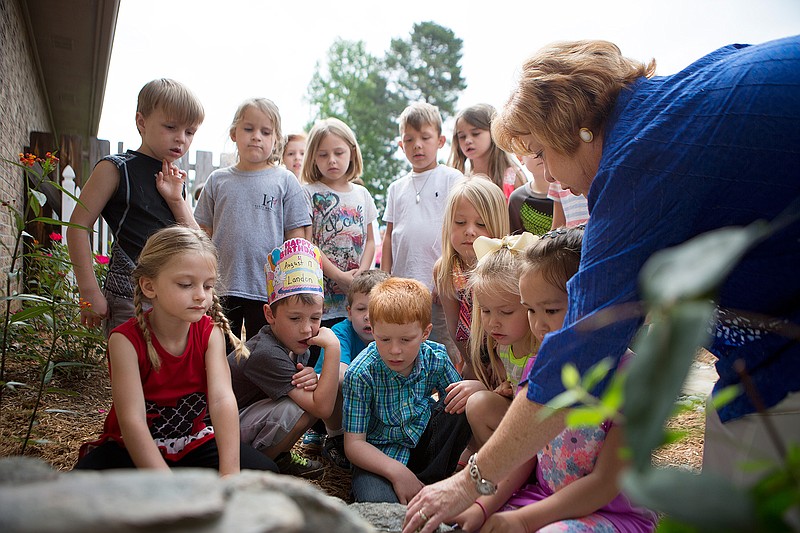Warm breezes lift the leaves of mint, abelia, milkweed and lantana plants inside a tall, white picket fence on a school playground. The plants lie in wait for winged visitors to not only dine, but begin new families on their blossoms and foliage.
Kindergarten classes at Red Lick Independent School District have been working on their butterfly garden for a few years now, and it's now come to fruition, with the plants finally mature enough to attract some of the 432 species recorded in Texas.
Teacher Becky Barrett said they have seen monarchs and painted ladies either dining on flower nectar or "puddling" in the nonsplashing water fountain. The green space has been created along strict guidelines for it to be considered a Texas Certified Butterfly Garden, she said.
"Butterflies like to puddle," Barrett said. "They don't like to be splashed, so one of the stipulations is running water-a puddling system." The water runs very slowly, and the fountain has a place for the butterflies to land and drink, but it doesn't have the traditional splash of a water fountain.
Other stipulations include providing host plants for the butterflies to lay their eggs upon. There, the eggs will hatch and caterpillars will dine on the foliage.
"I wanted to have the host plants so we could come out and get the eggs off the leaves and watch those eggs hatch into the little tiny caterpillars and watch them eat and watch them grow," said Cindy Penny, who also teaches kindergarten at Red Lick.
The plants are just now mature enough for that process to happen. The kindergarten students are familiar with the butterfly life cycle, the teachers said, as they ordered painted lady butterflies this spring, watched them grow and then released them in the butterfly garden. Penny said that experience was just the beginning of what she wants her students to learn.
"I wanted the kids to see the caterpillars eating the leaves, and I wanted to see the eggs hatch and the caterpillars come out because I've seen that before actually happen," she said.
The school has been collecting Box Tops for Education to fund the purchase of the plants, mulch, soil, fencing and statuary for about two years, with additional funds coming from grants, including a large one from the Red Lick Foundation.
Penny and Barrett, who are retiring this year, have been working with the other kindergarten teachers, Ellen Wallace and Tracey Hervey, to slowly turn the clay mud into the sanctuary it is today.
The plan is for students to use it as an outdoor classroom and also as a reward for good grades and behavior. Barrett said they have been mostly pulling weeds and learning how to put the plants in the ground. She added that they have also done some research on which plants should be included in the garden to attract butterflies and honeybees to pollinate the flowers.
"A love of plants-they just learn the functions of different plants," Barrett said. "What a host plant is. What a nectar plant is. What attracts what. Young children are scared to death of bees. But when they learn that you attract bees for a purpose, then it becomes a science lesson and they're not so afraid."
Kindergarten pupil Madelyn Carroll's eyes lit up when she was asked about her favorite part of the butterfly garden.
"I always have fun because I always get to smell the mint weeds because they're my favorite, because they make gum," she said, smiling. The kindergartners said they had seen monarchs and honeybees on the colorful flowers and across the playground. One said they liked the birdbath, with another stating the milkweed plant was her favorite.
Lydia Alexander, also a kindergartner, glanced at the picket fence enclosure and said, "I think the butterfly garden is a fun place for kids because it's pretty, colorful and has good smells."

